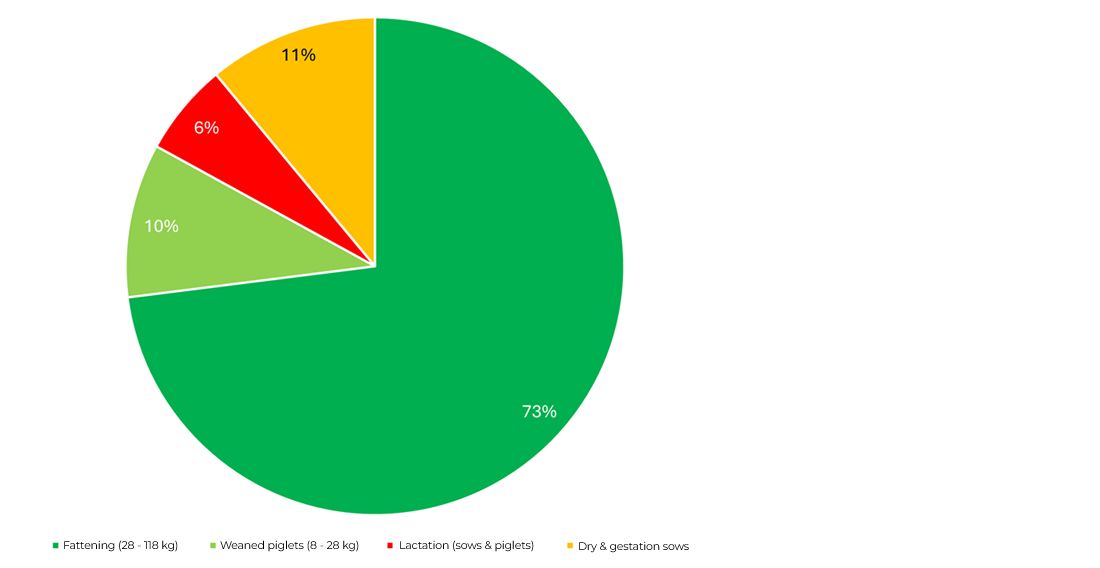Reducing the environmental impact of broiler production is talked about regularly, but what about other monogastric species such as swine? Pork is one of the most widely consumed meat products in the world and like most forms of intensive livestock farming, also has a notable environmental impact across several areas.
How does pork relate to other meat production animals?
Pork production is the second biggest producer of greenhouse gas emissions (GHGe; Figure 1).

GHGe from pork production include:
- Methane (CH4): enteric (less methane than cattle) + manure decomposition
- Nitrous oxide (N2O): from manure and fertilizer used in production of feed crops
- Carbon dioxide (CO2): emissions from feed production and on-farm energy
Figure 2 shows that ±70% of the total GHGe happens during the fattening phase of production (from a body weight of 25 kg up to a slaughter weight of 120 kg) while piglet production (sows and post weaning) only has a minor impact.


When we analyse the GHGe by its source, feed is the biggest contributor followed by emissions from manure (Figure 3). However, there can be huge differences in these figures in different geographical regions depending on production performance and other factors such as manure management. Manure that is stored in open lagoons has a higher level of emissions compared to biodigesters which have a much lower level of emissions.
When looking to improve the environmental impact of swine production, we need to consider:
- Feed and nutrition
- Manure storage and management
- Animal efficiency


